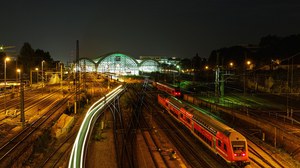Presentation of the Chair of Economics, esp. Transport Policy and Spatial Economics
What is the difference between urban and peripheral regions? How do cities arise? Which effect does climate policy have on cities and which measures maximize wealth? When does laissez-faire yield optimal allocations and where might state interventions be appropiate? How do we measure costs and benefits of transportation projects?
These questions are an example of issues Chair of Economics, esp. Transport Policy and Spatial Economics covers.
 © stopic.com
© stopic.com
Which topics does the chair deal with?
Different economic actors -households, firms and the government- concentrate in cities. A single measure of climate policy, e.g. the introduction of a toll, has an effect on all actors. By using an urban computable general equilibrium model we can calculate the effect of different measures on wealth.
People decide to live in cities, because cities have advantages compared to peripheral regions. However, the concentration of people in one regional can have negative effects, like congestion or air pollution. We consider positive as well as negative effects when looking at migration or location decisions of firms.
However, often we cannot monetarily measure the positive and negative effects of traffic and transportation, because not for all goods markets exist. To consistently measure all relevant effects for the society as a whole a proper evaluation is necessary. The monetary evaluation of i.e. environmental effects, travel time and accident risk therefore is an important question. To deal with issues like that the Chair of Economics, esp. Transport Policy and Spatial Economics uses econometric methods to estimate the willingness to pay for such effects.





